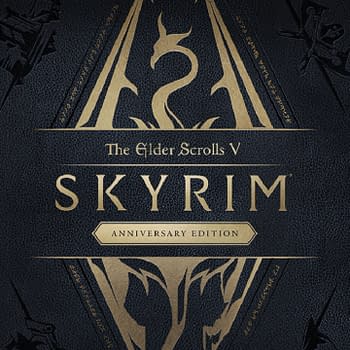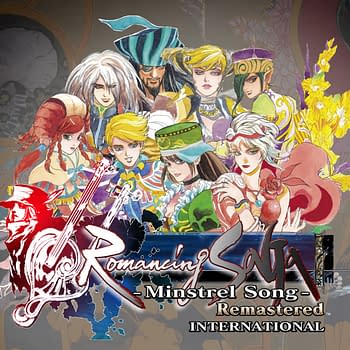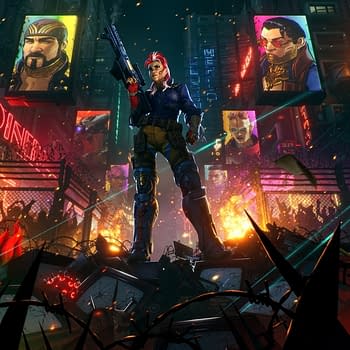Posted in: Games, Video Games | Tagged: Final Fantasy, Final Fantasy XIV, Final Fantasy XIV: Heavensward, Square Enix
Final Fantasy XIV: Heavensward Has Drawn To A Rather Strange Close
With the latest patch 3.56 The Far Edge of Fate pt II, Final Fantasy XIV: Heavensward is officially done. We've closed off all we can with the Ishgard arc and are on our way to Stormblood in the summer, but now that all of the story for Heavensward is over, just what exactly has version 3.0 given us? Taking Heavensward as just FFXIV version 3.0 was one thing, we had a neat little story and it wrapped itself up pretty cleanly. But of course, we've had a lot of content since then. So with Ishgard now firmly in our chocobo's rear-view mirror, I've decided to review all of Heavensward as it stands now.
As it's only been about two weeks since we got the latest story patch, here is your spoiler warning.
.
.
.
.
.
.
Right, starting off, Heavensward was pretty well set-up, wasn't it? After the main scenario of A Realm Reborn had cut off, the Warrior of Light had few friends and had struck out for the cold winds of Coerthas. As part of a continuation of that setup, the first thing we all did in Heavensward was cross the Steps of Faith to get ourselves into the new area of Ishgard.
What followed was a series of dungeons and trials that involved a bit more complexity than those in A Realm Reborn but none that caused too steep of an incline. The game's story was mostly one of political and religious intrigue, which was a pretty different setup than the more straight-foreward plot of A Realm Reborn. With only 10 levels and a core set of four trials and six dungeons, the base expansion of Heavensward was pretty well contained and had much higher stakes than version 2.0. This wasn't a fight of good vs evil but set in shades of grey – there was no evil Garlean Empire to fight but rather a rigid caste system built on lies for the preservation of ego and a lengthy blood feud between Ishgard and Dravania. And you, as the Warrior of Light, have your work cut out for you. There is no Castrum to storm, no massive ancient god-weapon.
Just people and emotions and betrayal. The conclusion of 3.0 was wrapped up with a rather decent bow. And then came the subsequent patches. More dungeons were added, some upping the difficulty by quite a bit, some were more experimental, and then there was Alexander, the 8-player raid set with multiple difficulties, and occasionally bonkers mechanics. Alexander wasn't the utter madness that the Coils of Bahamut were, however, but still fun to run and challenging through. Fewer supergolems though.
The Warring Triad helped round out the lack of true primals in FFXIV by giving us Eikons of ages long past. Sophia was gorgeous, Sephirot was not as awesome as a boss named after Sephiroth should be, and Zervan was just amusing. Watching other players not be able to deal with a shifting platform or with a whole lot of AoEs to dodge is always great.
The saga of the Void Ark was definitely a highlight of the expansion. Not only did it include some bizarre mechanics, but the aesthetic of it was completely contrary to any other aspect of the game. I really like the Voidsent, okay? Fighting Diabolos again was definitely very, very fun.
The story coming out of 3.0 focused more on easing the tensions between Ishgard and Dravania in the wake of toppling the foundations of the Archbishop's reign. A lot of it was worldbuilding, easing tensions, but with a continued threat in Nidhogg. Obviously The Aery wasn't going to be the last we saw of him. The subsequent patches continued the tale of Nidhogg's eyes, their corruption and power, which corrupted friend and foe alike. Still, you needed to take down those threats, and you stood up to each and every one. And then things got a bit strange.
Suddenly, it wasn't about Ishgard and dragons anymore, but about Ala Mhigo. The transition from the Dragonsong War included a bit about the Warriors of Darkness – twisted versions of the player characters. Former Warriors of Light whose world had collapsed, because too much light can be as destructive as a world plunged into darkness. Because crystals, naturally. And that was great, but that story ended quickly. It seemed like we met the Warriors of Darkness only to fight them once, and suddenly solve their problems in a deus ex machina thanks to Hydalen's crystals that each of the Warriors and yourself possessed. And then we were to believe that the whole thing was orchestrated – not by the Ascians, but by a fellow Scion?
As soon as that fight was over, we got back Yda and Papalymo, and suddenly the focus was on the people of Ala Mhigo. The Garleans had conquered Ala Mhigo long before the start of even version 1.0, and we've heard much of the plight of the people left in Ala Mhigo as well as the refugees. But the struggles of Ala Mhigo have always seemed distant. Perhaps because we've never gone near it. Before Heavenzward we had been to Coerthas and made friends with Ishgardians, dealt with their military. We spent much of the time between the end of 2.0 and the start of 3.0 working toward Ishgard. We've spent much less time dealing with Ala Mhigo.
The Far Edge of Fate had it's work cut out for it. Not only did it have to fully finish the Dragonsong War, it also had to take us to Ala Mhigo. Part 1 did a decent amount of the legwork, setting up a new war with the Garlean Empire and bringing back an old enemy in Ilberd. You fight the man that betrayed you back at the end of A Realm Reborn, but before he dies, he takes Nidhogg's eyes and summons a primal. Then you lose a friend, again.
Part 2 was a series of cutscenes and narrative engineered to help bridge the gap into version 4.0, but you do have to wonder just what kind of bridge an epic battle between a twisted primal and an ancient primal-killing relic could do on that front? The emotional resonance for the ending is… sorely lacking.
The end of A Realm Reborn left you with few allies, but the fates of your friends were uncertain. Heavensward gave you some friends back, and took others away in a more permanent fashion. With Minfillia in a different dimension, Haurchefantt and Paplymo dead, Yda was dead the whole time and instead was her sister Lyse… It is clear going into Stormblood that no one of your supporting cast is safe. And that's pretty fantastic for a game that, often times, is a bit too positive.
But in almost every other way, we've gone back to basics. Our enemy is the Garlean Empire, Eorzea's combination of the Nazi regime and the Roman Empire with all the excesses and faults of both. The Garleans are easy to hate, and that feels just a bit cheap now.










![[REVIEW] "Gang Beasts" is Zany Party Madness](https://mlpnk72yciwc.i.optimole.com/cqhiHLc.IIZS~2ef73/w:350/h:350/q:75/rt:fill/g:ce/https://bleedingcool.com/wp-content/uploads/2019/09/gang-beasts-7-350x350.jpg)

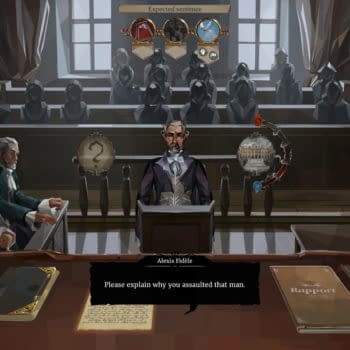
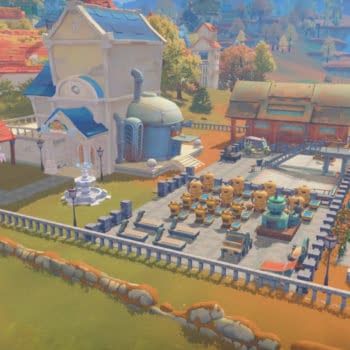
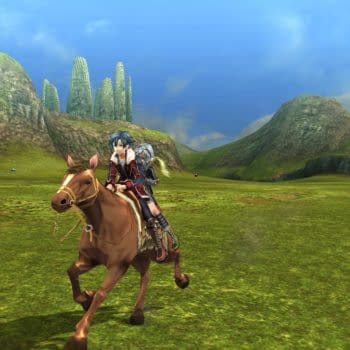
![[REVIEW] "Divinity: Original Sin II" Definitive Edition is Almost Perfect](https://mlpnk72yciwc.i.optimole.com/cqhiHLc.IIZS~2ef73/w:350/h:350/q:75/rt:fill/g:ce/https://bleedingcool.com/wp-content/uploads/2018/08/Divinity-Original-Sin-2-Definitive-Edition-art-350x350.jpg)

